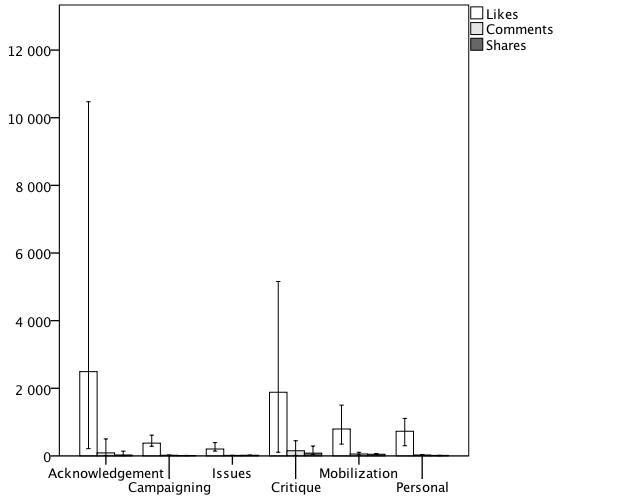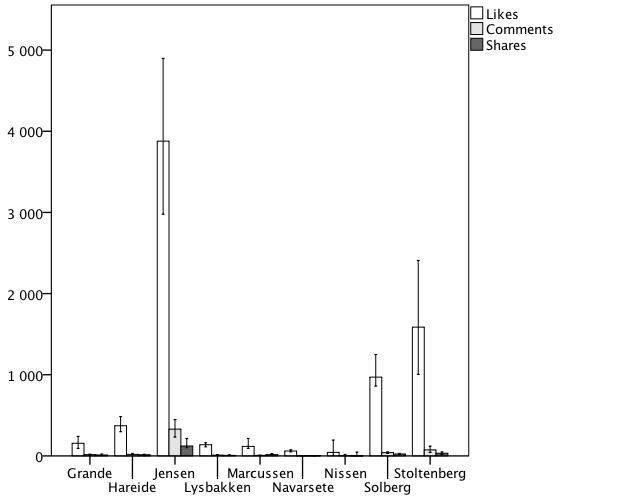Where the previous post dealt with the popularity (measured as the median amounts of likes, comments and shares) of Facebook posts made by Norwegian party leaders, the current post presents the popularity of posts characterized by their content. While an exhaustive description of the themes employed for this purpose goes beyond what is presented here, it is my intention here to provide such detail – rather, to give a quick glimpse into one of my ongoing research projects. Here we go:
As several of the error bars visible in this figure appear comparably larger to those reported in the previous one, the spread around the reported medians must be taken into account – especially when it comes to feedback in the form of likes, which much like in the previous figure comes up as most common across all themes. For this metric, then, posts featuring Acknowledgements (Md = 2494) – giving thanks to supporters, especially at the very end of the campaign – and those characterized as primarily focused on Critique (Md = 1881) emerge as yielding the highest amounts of likes, while the other metrics must be considered diminutive in comparison. As such, while showing gratitude towards or criticizing others appear to result in ample amounts of feedback, levels of engagement as a result of other thematic uses must be regarded as minimal in comparison. While an overarching analysis like the one performed here cannot provide a more qualitative assessment of the feedback measured, we can point to tendencies regarding what type of content, posted by politicians, that appears to resonate the most with their respective followers. As such, the findings provides some insight into what seems to “work” in an online setting – an empirical finding that is perhaps not especially conducive to the basic tenets of various normative theories of deliberation.

